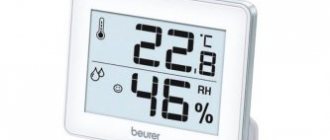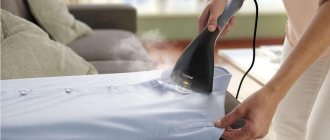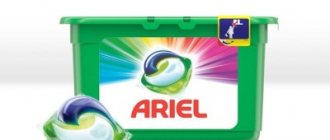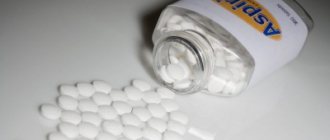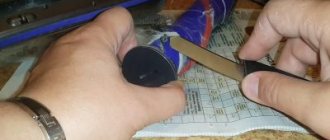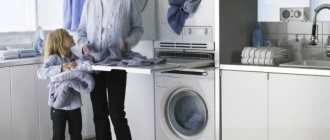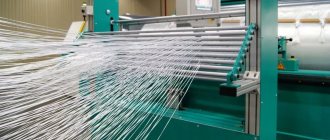Why do you need to measure air humidity?
Both excessively dry and excessively humid air can lead to incorrect operation of various devices and equipment and cause health problems. There are optimal humidity parameters for the growth of plants and animals, as well as fermentation processes, which play an important role in food production.
High humidity can cause mold, mildew, and damage to furniture, things and food in the room. Excessive dryness causes a lot of dermatological problems, often causes allergies and causes asthma in a person.
Air is considered too dry when its moisture vapor content is less than 40%, and excessively humid when it contains more than 80%.
Humidity imbalance and what causes it
There are several factors that affect the humidity in an apartment:
- Ventilation. It’s not for nothing that a high-quality ventilation device costs a lot of money. If air circulation does not occur and there is no constant outflow of humidity, all this accumulates indoors, creating a greenhouse effect.
- Temperature. You also need to take into account that the higher the air temperature, the higher its ability to absorb moisture. That's why it's so suffocatingly humid in the tropics and scorching hot in the desert. For an apartment, it is necessary to find that pleasant balance between the “tropics” and the “desert,” somewhere in the “birch forest on the bank of a river.”
- Operation of heating devices. Artificial heating of the air leads to the removal of moisture from it, which leads to overdrying. Which, in turn, affects the mucous membrane, making it vulnerable to viral diseases. Therefore, doctors recommend using humidifiers during the heating season. But we'll talk about this in more detail below.
- Congestion of houses. Today, when building houses, it has become very “fashionable” to worry that it should be built only from “breathable” materials. After all, if moisture is not removed naturally, then not only does the humidity in the house increase, but mold also grows, and the air becomes musty. Therefore, they try to arrange facades with ventilation gaps, purchase only “breathable” plaster and wallpaper, and opt for high-quality insulation materials that allow air to pass through well, for example, basalt, mineral wool.
- Air pollution. This is another reason for humidity destabilization. At the same time, it is not necessary to keep a clandestine laboratory in your home to “pollute” the air. It is enough to stay at home and do your normal business. The problem can be solved simply by good ventilation of all rooms.
In principle, a gas mask is a good way to hide from unfavorable “weather in the house.”
So, let’s summarize. In order for the humidity to be normal, you need to build a house only from “breathable” materials, arrange good ventilation, monitor the temperature and ventilate the room more often. If the latter costs us nothing, then many “get along” with the previous factors in their “non-ideal” homes. Let's take a closer look at what to do in such cases.
Instruments for measuring air humidity: types, operating principle
Modern manufacturers produce devices of various types and types. The oldest measuring device is the moisture meter, invented by Leonardo da Vinci in 1400. Now it is practically not used.
Modern moisture meters are called hygrometers
It was a pharmacy scale, on one bowl of which a piece of wax was placed, and on the other the same amount of some porous material. The disadvantage of the device is that it can only be used to control fluctuations in air humidity.
Expert opinion
Chebatkov Maxim Pavlovich
Specialist in household appliances and their repair
Modern moisture meters are called hygrometers. These are more accurate measuring devices. Manufacturers produce a wide range of these products, which have different operating principles. All of them serve to measure relative air humidity and have varying degrees of error.
Hygrometers are distinguished:
- Hairy . Their operating principle is based on changing the length of human hair, which is the main element of the device. In dry rooms, hair shortens, and in humid rooms it lengthens. These fluctuations in hair length are displayed on the device scale as an indicator of the percentage of moisture vapor in the air.
- Psychometric . Their design is considered the simplest. It consists of two mercury thermometers. One of them is dry, and the second is wet. The humidity indicator is determined from the table from the difference in the readings of the thermometers of the device. The work of the psychometer is based on the principle of evaporation and absorption of water. When liquid evaporates from the wetted surface of one of the thermometers, energy loss occurs and, as a result, temperature drops. The reverse process causes an increase in air humidity in the room.
- Weighing . The device consists of a pump and tubes filled with a hygroscopic composition that can absorb air. Using a pump, air is pumped into the device, the volume of which and the weight of the structure determine the relative humidity of the air.
- Mechanical (ceramic) . The operating principle of the device is based on measuring the electrical resistance of the device filler. It changes with fluctuations in relative air humidity. The filler is a ceramic mass consisting of oxides of kaolin, silicon and clay.
- Electronic . The most accurate device. The operating principle is based on changing the resistance of lithium chloride, which is applied to a special glass plate.
- Condensation . The main element of the device is a mirror, the temperature of which changes along with fluctuations in air humidity.
Instrument measurement data can be displayed on displays in numerical format or on a dial with an arrow.
How to use?
There are usually no difficulties when using a hygrometer. The principle of operation of the unit is based on measurements of the parameters of dry and moistened thermometers - they continuously monitor environmental indicators. Based on the difference in the obtained values, the parameters of air humidity in a residential building are calculated.
The hygrometer contains a pair of thermometers. One of them is ordinary, it measures the air temperature, the other calculates the humidity level. The most primitive models are washed with distilled water and give indicators, using which, using special tables, you can calculate the level of humidity in the room. The most modern models contain special microcircuits that calculate the level of humidity independently.
Moderate humidity has a beneficial effect on houseplants, which delight with their long flowering and bright foliage. The cost of hygrometers is low, so almost everyone can afford to buy such a device.
A review of the Xiaomi room hygrometer-thermometer awaits you below.
Stadler Form Selina Little Hygrometer White S-080
Stadler Form Selina Little Hygrometer White S-080
Country of origin: Switzerland. Very light model. Its weight is only 15 grams. The small overall dimensions of the device allow it to be carried in a clothing pocket. Using this model, you can measure not only relative air humidity, but also temperature. The latter indicator can be displayed on the screen in C° or F°.
The measurement error is +3%. The device has a convenient retractable stand and a large screen. If necessary, it can be mounted to a wall or cabinet. The range of measurement of air humidity is 10-98%, temperature – from -10 to +50 C°. The manufacturer's warranty period is 12 months.
Advantages:
- portability;
- light weight;
- clear display of measurement results;
- ease of installation and measurement.
No deficiencies found.
Content:
Before we talk about humidity measuring devices, let's understand what humidity is and why measure it. Humidity is the content of water droplets (vapor) in various substances: air, solids, porous and fibrous materials. Moisture is present in certain objects, only in different quantities. The percentage of water per mass of the object being tested is the humidity level.
What humidity level is optimal? There cannot be a definite answer to this question, since each specific situation and the object being tested will have its own requirements. For example, in a warehouse where vegetables and fruits are stored, the humidity level should be at least 80%, but for storing bread such conditions will be unacceptable - the humidity level in the room should not exceed 75%. If living rooms are checked, then a humidity level of 50–55% is considered normal for human life.
In your daily life, you have probably encountered problems caused by abnormal humidity levels. For example, with an increased concentration of moisture in the air, apartments can dampen finishing materials, causing fungus and mold to appear. If the air, on the contrary, is too dry, this will affect a person’s well-being. The most common signs are dry skin of the face and hands, a tendency to respiratory diseases, eye irritation, and allergies. Violation of the permissible level of humidity affects not only people, but also plants and animals; food, food products and building materials spoil. Therefore, it is so important to control the humidity level using a special device - an electronic hygrometer. To appreciate the full significance of its use, let's get acquainted with the history of this device.
Megeon 20207
Megeon 20207
Country of origin: China. The electronic hygrometer has a wide LCD screen that is easy to visualize, on which all measurement indicators are simultaneously displayed. With this model you can measure relative humidity and temperature. There is a memory for storing previous measurements.
The model has a push-button control device, small size and light weight. The design is equipped with an alarm clock, clock and calendar. The model is intended for taking measurements at home and in office premises. Powered by AAA battery. Operating voltage 1.5 V. The device can operate in the temperature range from -50 to +70°C. This allows it to be used in unheated buildings. Measurement error +5%.
Advantages:
- compactness and light weight;
- economical power consumption;
- ease of operation;
- heat resistance.
Main disadvantage:
- high percentage of error.
Humidity in the environment
Air humidity is important both in nature and in human life. Initially, our well-being often depends on this indicator. After all, the intensity of moisture evaporation from our skin is determined by air humidity. Low humidity can lead to dry mucous membranes, problems with skin and hair, and very high humidity can lead to a deterioration in general physical condition.
Air humidity affects the heat exchange of many organisms with the environment, the life of animals and plants. When people grow plants in greenhouses or conservatories, they need to know and control the air humidity. In this way, the necessary regime for their growth and vital activity is maintained.
The value of air humidity plays a big role in meteorologists for weather forecasts. When operating various equipment, it is important to take into account humidity - at high levels, corrosion occurs faster. When storing important works of art and books, keep an eye on humidity as well.
Source
CEM DT-322
CEM DT-322
Country of origin: China. The model is intended for measuring relative air humidity and temperature in domestic and office premises. Measurement range: temperature - from 0 to 50°C, humidity - from 10 to 90%. The design has a built-in alarm clock and calendar. Temperature can be measured by the device in C° or F°. Model weight 74 grams. The latest readings from the device are stored in its memory. Measurement error +5%.
Advantages:
- compactness;
- ease of operation;
- maintaining measurement statistics;
- convenient screen and controls.
Main disadvantage:
- Slow sensor operation.
Physical concept
Humidity is the content of water vapor in the air. The comfortable existence of living organisms, the possibility of the development of living nature, and the safety of materials are possible only with certain values of this parameter.
It happens:
- absolute;
- relative.
Absolute shows the amount of water vapor in a certain volume. Most often measured in g/m3. It has no practical significance, since it is impossible to determine whether the humidity is normal or not, knowing that the amount of water vapor is 10 g/m3.
The maximum values vary depending on the air temperature. At – 30°C this parameter is equal to 0.29 g/m3, at 0°C – 4.8 g/m3, at + 30°C – 30.4 g/m3. The maximum value is reached at a temperature of 100°C (boiling point of water) and is equal to 598 g/m3.
Relative is determined by dividing the current humidity value by the maximum possible at a certain temperature, multiplied by 100. Humidity is measured as a percentage. It is widely used in weather forecasts, the composition of food products, and the characteristics of industrial, warehouse and residential premises.
Laserliner ClimaCheck 082.028A
Laserliner ClimaCheck 082.028A
The German brand is made in China. The electronic device is designed to measure temperature and relative humidity in domestic and office premises. The model is equipped with a convenient digital display. Temperature can be measured in C° or F°. The design has a convenient magnetic fastening. The humidity measurement range is from 20 to 99%. Measurement error +1%. The weight of the device is 180 grams.
Advantages:
- ease of operation;
- compactness and light weight;
- multifunctionality.
Main disadvantage:
- inconvenient narrow screen.
Types and scope of application of hygrometers
If previously instruments for measuring humidity were used only for professional purposes, for example, in scientific laboratories, today anyone who cares about the microclimate in their home can use a hygrometer. Technological progress has gone even further, the device has been improved, and models have appeared that can determine the moisture content of solids. A more detailed classification is presented in the table:
| Name | Description | Purpose |
| Solid Moisture Meter | Used to test materials such as concrete, cement, wood, cardboard, paper, etc. One device can be designed to work with only one type of material, for example, only wood, or combine several capabilities at once. Measurement can be carried out by introducing special sharp probes into the structure of the object or in a non-contact manner without disturbing the appearance of the product. | Quality control of building materials in production, during purchase, storage, checking the quality characteristics of concrete structures, finished products made of wood, paper, etc. |
| Air humidity meter | Equipped with a probe or sensor that responds to the accumulation of tiny water particles in the air. | Checking the storage conditions of books and art objects in museums, libraries, monitoring the drying process of products in production. |
| Thermohygrometer | It has a sensor that takes readings of both temperature and air humidity. It works, like the previous one, in a non-contact way. | Measuring microclimate parameters in residential, industrial premises, offices, animal housing, greenhouses, warehouses, etc. |
| Universal hygrometer | Designed to measure air humidity, solid media, as well as temperature and dew point. | It can be used in various fields of activity: when checking the storage conditions of paper products, food products, grain, as well as in everyday life. |
For more information about using instruments for measuring humidity, read the article “How to always obtain accurate data when working with a moisture meter?”
If some of the above examples are close to you, and you are thinking about buying a hygrometer, you need to take into account several important aspects. Let's talk about this in more detail.
G337
G337
Country of origin: China. An alcohol hygrometer can measure temperature and relative humidity indoors and outdoors. Measurement range: temperature – from -40 to +50 C°, humidity – from 0 to 100%. The device body is equipped with a loop for wall mounting and is made of plastic. Model weight 50 grams.
Advantages:
- safety;
- does not require batteries or battery recharging;
- versatility of use;
- light weight.
Main disadvantage:
- outdated design.
What is dew point
If you cool moist air, you can bring the vapor in the air to saturation. At the same time, you can notice how dew appears on smooth surfaces. The appearance of dew will occur at a certain temperature. This temperature is called the dew point.
The dew point is the temperature at which the relative humidity becomes 100%. At this temperature, moisture condenses from the air: dew falls, it rains, or, for example, glass fogs up.
Boneco A7057
Boneco A7057
Country of origin: Germany. The mechanical hygrometer is designed to measure relative air humidity in domestic and office premises. The model has a white plastic body. The device can be attached to the wall using a sticky element. Measurement readings are displayed on a scale having a measurement range from 20 to 100%. Measurement error +5%.
Advantages:
- compactness;
- nice design;
- low cost.
Flaws:
- the device requires calibration before starting work;
- short warranty period.
Types of sensors
Sensor for measuring air quality
The following types of devices are distinguished:
- infrared. They are characterized by a wide range of measurements, accuracy of readings, and a long operating period. The disadvantage is the high price compared to analogues.
- electrochemical. They are distinguished by high accuracy of readings, especially the level of carbon dioxide, the presence of an automatic calibration option, and reasonable cost. Disadvantages: short service life compared to the previous version, small operating range.
- electroacoustic. Characterized by a long operating period without the need for calibration. Disadvantages - high price, service life is shorter than that of the first type of device.
VIT-2
VIT-2
Country of origin: Russia. The psychometric type hygrometer is designed for measuring temperature and relative humidity in domestic, office and warehouse premises. The body of the model is made of plastic and has a mount for hanging on the wall. The instrument readings are displayed on a metal scale. Relative humidity measurement range from 20 to 90%.
Dignity:
- low cost;
- simplicity of design.
Main disadvantage:
- the need to periodically add distilled water to the device.
More information about humidity standards
This is the most detailed answer to the question of what air humidity should be in the apartment. Recommended percentages depend on the time of year, the age of the residents, as well as the purpose of the premises.
GOST
According to the recommendations of GOST 30494-96, the optimal indicators in different seasons are clearly defined numbers:
- winter - 30-40%;
- summer - 40-60%;
- spring/autumn - 30-45%.
Depending on age, the following parameters must be provided:
- adults - 40-60%;
- small children (up to 6 years old) - 50-60%.
Now about the purpose of the premises.
- Bathrooms. Since when renovating such “wet” rooms, moisture-resistant or maximally protected materials are always used, the ideal humidity here is relatively high. It is 60-70%.
- Kitchens, pantries and hallways. In this case, the norms are lower; the same average values are considered optimal - 40-60%.
- There are no regulations for balconies and loggias, because these areas do not belong to residential areas.
To a greater extent, owners who ask the question of what air humidity should be in the apartment are concerned about the living quarters. The rooms deserve a separate paragraph. The reason for the change in optimal values is the presence (or absence) of other “consumer-producers”. We are talking about indoor plants. If there are flowers, then the humidity should be at least 60-70%. “Residents” of the tropics and subtropics require higher values - from 80 to 95%, so for such plants it is better to allocate a separate room, or “give” them a protected balcony or loggia.
SanPiN
The recommendations of SanPiN 2.1.2.2645-10 differ from GOST standards. In this case, the limits are stricter: the relative humidity in the premises in the cold season should be 60%, in the summer - 65%. Another difference is the lack of standards for rooms not intended for long-term stays. SanPiN includes kitchens, toilets, bathrooms, corridors and storerooms as such premises.
Ideally, the maximum level of humidity for the normal well-being of people in living rooms should not exceed 60-65%. The same conditions are required for household appliances, paintings, books, documents, carpets, curtains, as well as upholstered furniture, clothing and other things.
Humidity standards for children
In this case, the main factor is the age of the child. Newborn “citizens” are especially sensitive to the microclimate.
- Excessively dry air will affect babies, since the body will have to spend resources on humidifying it. The result will be large losses of water, which will cause dryness of the mucous membranes of the nose and nasopharynx, making breathing much more difficult. Such a child will begin to be capricious, refuse to eat, and often wake up in the middle of the night.
- The need for a long heating season is dictated by the harsh climate of most Russian regions. In such conditions, dry air is the rule rather than the exception. Radiators can significantly reduce indoor air humidity - by 20-40%. The consequences for children are constant respiratory diseases, the possibility of developing bronchial asthma, and rhinitis.
TFA 45.2033
TFA 45.2033
Country of origin: Germany. The mechanical type hygrometer is made in the shape of a circle. The case has a brass ring and an informative dial, which is divided into comfort zones. Measuring range: humidity from 0 to 100%, temperature from -15 to +55C°. The device has a wall mount.
Advantages:
- low cost;
- ease of operation;
- wall mounting option.
Main disadvantage:
- When direct sunlight hits the device, it gives readings with a large error.
DIY moisture meter
You can make a hygrometer with your own hands from an old multimeter. To do this, you need to replace the contacts with needles like those of factory moisture meters (or sharpen them). The result is a device that resembles a contact moisture meter.
Measuring with a multimeter only gives approximate results because it has a high error. So you shouldn't rely on it too much.
The main difficulty here is that the readings will be displayed not in % moisture content, but in Ohms. However, humidity can be calculated based on the fact that for most types of wood, the resistance at a humidity of 8%, which is suitable for construction, is from 2 to 4 Ohms with a distance of no more than 1 cm between the electrodes located along the fibers. When positioned transversely, it is one and a half to two times larger.
Sawo 115-HA
Sawo 115-HA
The Finnish brand is made in the Philippines. The body of the model is made of aspen and has the shape of a house. The original design of the device allows it to be used as an element of interior decor. Measurement readings are displayed on a large graphic dial. The model can be used to control the relative humidity in a steam room. At high temperatures, the hygrometer body begins to emit a pleasant woody aroma. The humidity measurement range of the device is from 0 to 100%.
Advantages:
- low cost;
- high accuracy;
- ease of operation;
- Possibility of use in rooms with high humidity and temperature.
Flaws:
- there is no protective glass on the dial;
- no temperature measurement function.
The best non-contact hygrometers
Let's look at several good models of non-contact moisture meters.
Sanpometr MD918
A relatively inexpensive model for a contactless device - the cost of the device ranges from 6,000 to 7,000 rubles.
Information is displayed on a liquid crystal display. It is indicated as a percentage. There is a backlight that makes working in low light conditions easier.
On the sides of the case there are linings with notches. They make it easier to hold the device during measurements and prevent it from falling out of your hands.
Can work in sub-zero temperatures. Reliable readings are guaranteed at temperatures down to – 5 o C.
To measure, you need to attach the device’s sensor to the wood and wait for a sound signal. After this, the measurement results will be displayed on the display.
Powered by three AAA batteries.
Condtrol Hydro-Tec 4.3
Another model of a non-contact hygrometer. It costs around 6,000 rubles.
Information about the measurement results is displayed on a liquid crystal monochrome display. For working in low light conditions there is a backlight, which is turned on by a button on the front of the case.
A distinctive feature of the model is that it is capable of measuring humidity not only in wood, but also in brick. For this purpose, a special mode of operation of the device is provided. It can also be turned on using a button on the front of the case.
The research results are stored in the device’s memory. You can switch between them using the arrow buttons. To reset all saved results, click the “Zero Set” button.
There are rubberized corrugated inserts on the sides of the case. They significantly improve the hold of the device.
The device is powered by three AAA batteries. The model has a battery charge indicator and signals the need to replace them.
What wood moisture meter do you use?
Needle-typeNon-contact
Harvia SAC92200
Harvia SAC92200
Country of origin: Finland. The body of the model is made of wood in eco-style. It has the shape of a rounded square, into which a clear dial is inserted, the measurement step of which is 10 units. The body material is birch. The model has a hair operating principle. Measuring range: pressure from 0 to 100%, temperature - from -15 to +55C° .
Advantages:
- nice design;
- low cost;
- high accuracy;
- ease of operation.
Main disadvantage:
- long period of response to changes in air humidity.
Restoring optimal humidity levels
To eliminate dryness in the room, it is recommended to buy a humidifier
The content of water vapor in the atmosphere affects the well-being and breathing of people in the room. It is of particular importance for diseases of the bronchi, lungs and ENT organs. If the humidity level in a room is measured and the value is outside the recommended range, appropriate measures must be taken.
If the air is constantly dry, you can do the following:
- Buy a humidifier. Climate technology will allow you to monitor atmospheric indicators and maintain them within specified limits. Modern devices have a flexible and variable system of settings and are equipped with additional options, for example, ionization and filtration of dust and pollen particles (which is important for allergy sufferers).
- Ventilate the room more often. For most of the year this method is relevant, but in the summer in regions with a dry climate it can only worsen the situation. In addition, when opening windows, allergenic agents, microorganisms, and harmful gases from the street enter the home. But keeping them closed is also impractical - this leads to the accumulation of excess carbon dioxide. It is necessary to organize ventilation of the home. To do this, you can purchase a breather that heats and filters street air and supplies it to the room.
- Do not forget about timely wet cleaning.
- Place bowls or basins filled with water in your home. It is better to do this near heating radiators - at elevated temperatures, evaporation occurs faster. You can place the container on the windowsill.
- Installing a home aquarium will help improve climatic conditions. At the same time, we should not forget about caring for the fish and maintaining hygiene.
If there is too much water vapor in the air, you should not hang washed clothes in the bathroom or living rooms. It's better to take things out to the balcony. After taking a bath or shower, ventilate the bathroom. If there is a breather in the house, turn it on for at least 30 minutes. You can also purchase a device with a fan and evaporator that helps remove excess moisture from the atmosphere.
Dry air is harmful to plants. When placed in unsuitable climatic conditions, they wither and become sick. The process is first noticed by the leaves, which begin to dry out and fall off. Crops that are native to tropical and subtropical areas especially need moisture.
Modern mechanical and electronic models of hygrometers are suitable for household use. Some types of premises require highly accurate measurements with minimal error.
Source
Question answer
Should household hygrometers be certified by metrological services?
Household hygrometers do not require such certification, because devices for such purposes are not subject to requirements for high accuracy of readings.
What error indicator can be considered optimal for household appliances that measure relative air humidity?
The maximum permissible error for household appliances is 3-4%.
How long should measurements be taken to obtain a more accurate measurement result?
Household appliances measure relative air humidity within 40-60 seconds. The measurement speed of professional devices is 1-5 seconds.
Can household hygrometers be used to determine relative air humidity and be used to measure the moisture content of bulk materials?
To determine the moisture content of raw materials, manufacturers produce contact devices that have a narrow specialization: for wood, bulk materials, etc.
What measurement range should household hygrometers have?
It all depends on the intended installation location of the device. The range of measurement of relative air humidity should be: for the bathroom and kitchen from 0 to 100%, for living rooms and corridors from 20 to 80%.
Controlling relative air humidity allows you to create comfortable living conditions in residential and working conditions in office spaces. For these purposes, household, non-contact hygrometers are used.
Temperature regime for newborns
In the development of the baby, the surrounding conditions play almost one of the most important roles and that is why it is necessary to maintain the proper temperature regime in the room in which the child rests and spends most of his time
In order to prevent the newborn from getting sick and his health from deteriorating, it is important not only to avoid hypothermia, but also excessive overheating
The temperature norm for a baby also depends on its physical characteristics:
- A newborn born exactly on time and without any abnormalities will feel comfortable at 19°-21°C.
- A premature baby requires more attention and therefore the air temperature in his bedroom should be approximately 24°-25°C.
What does hypothermia or excessive overheating of a child’s body lead to?
Room temperature for newborns should be comfortable and comply with GOST standards. After all, infants generate heat more intensely than older children and they sweat more, because of this the child’s body loses the water and mineral salts it needs.
To prevent this from happening, you need to carefully monitor how hot the air in the room is. It is also worth noting that there are a number of symptoms indicating that the newborn is overheated:
- The child's body temperature is slightly higher than normal
- Newborn begins to breathe using his mouth
- The baby's breathing is difficult due to the appearance of hard crusts in the nose
- Redness and diaper rash appear in the folds of the skin
- Your baby may have a tummy ache
Even slight hypothermia can cause a newborn to get sick, so you need to make sure that the temperature in the child’s bedroom does not drop even by a couple of degrees.
How to create a comfortable temperature for a baby
does not fall below 18 - 20 degrees
Therefore, if you notice that the air in the room has become too cold and the newborn is freezing, you need to artificially “warm up” the room. In addition, it would also be useful to additionally insulate the baby himself by covering him with a warm blanket or blanket.
We all know what the temperature in a baby’s room should be, but what if the room gets too hot in the summer?
The answer to this question is simple: you need to give the child plenty of water, remove excess clothes from him and wipe him with water. All these simple steps will help avoid overheating.
In conclusion, it is worth noting that, despite the personal preferences of each person, doctors still recommend adhering to generally established standards. This is due to the fact that overheating or hypothermia is harmful not only to the body of a newborn baby, but also to the health of an adult.
According to GOST 30494-96, which determines the parameters of the microclimate in residential and public premises, in the cold season the optimal air temperature in the kitchen and toilet is considered to be 19-21 ° C, in the bathroom and combined toilet - 24-26 ° C, in the bedroom and others living rooms intended for relaxation and study - 20-22°C, in the lobby and storage rooms - 16-18°C. At the same time, in areas with low temperatures reaching -31°C and below, heating of rooms to 21-23°C is provided. Acceptable standards for a comfortable stay in living rooms are considered to be values in the range of 18-24°C; for the kitchen, toilet and bathroom this figure varies in the range of 18-26°C, for the pantry - 12-22°C. And in areas with low temperatures, heating of residential premises to 20-24°C is allowed.
In the warm season, the optimal air temperature for living rooms and recreation rooms is considered to be a range of values equal to 22-25°C, but fluctuations within 20-28°C are also acceptable. At night, the temperature difference can be no more than 3 degrees.
The optimal temperature for a children's room is 23°C. It is advisable to maintain the air temperature at the same level all the time using heating devices, so that while the baby is changing clothes and sleeping, he does not become hypothermic. It is recommended to maintain high humidity using special humidifiers.
